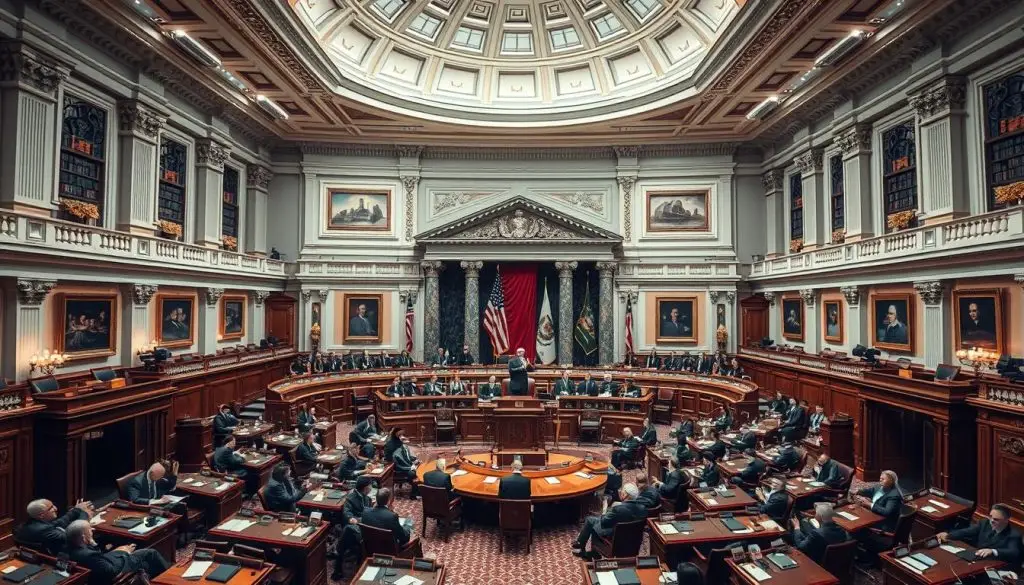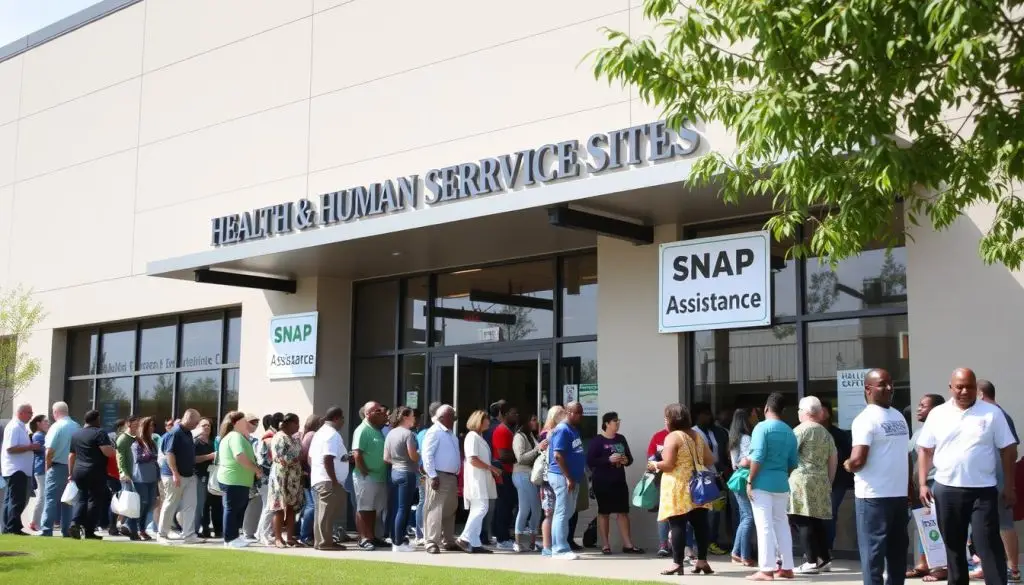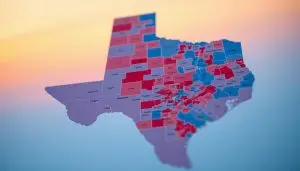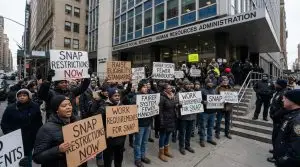Democrats Vote to End Longest Government Shutdown in U.S History
After weeks of deadlock, Democrats push through a decisive vote to resolve the lengthy government shutdown, restoring vital services.

Democrats Vote to End Longest Government Shutdown in U.S History
Click to summarize this article.
Democrats Vote to End Lengthy Government Shutdown: The Senate breathed a sigh of relief. Eight moderate Democrats joined Republicans in a 60-40 vote to advance funding after 14 previous attempts failed. This felt like a lifeline in a season of gridlock and stalemate.
The deal promises a future vote on health care subsidies, but there’s no guarantee. This uncertainty is painful, yet it offers hope. The plan would fund the government until January 30, support SNAP, reverse layoffs, and ensure back pay. But it needs the House’s approval and President Donald Trump’s signature to become law.
Weeks of legal battles over SNAP and thousands of flight delays highlight the shutdown’s toll. It’s the most extended shutdown in U.S. history, and we’re counting its cost in people, not just days. For more on the night’s vote and its impact, see this report on the longest ever US shutdown.
Government Shutdown Key Takeaways
- Eight Democrats joined Republicans to advance short-term government funding in a 60-40 vote.
- After 14 failed attempts, the Senate broke through congressional gridlock, laying out a narrow path forward.
- The deal offers only a future vote on health care subsidies, with no guarantee of an extension.
- SNAP is fully funded, federal layoffs are reversed, and back pay is assured if the measure becomes law.
- Travel chaos and legal fights over benefits underscore the human cost of the political stalemate.
- Final steps remain: the House must pass the bill, and President Donald Trump must sign it.
Senate Breakthrough: Moderate Democrats Join Republicans to Advance Short-Term Government Funding
I kept replaying the roll call in my head. A narrow doorway opened in a long hallway of delay, and I felt the room exhale. In a season defined by a Government shutdown and a bruised federal budget, a sliver of movement matters. Could a small step ease a larger legislative impasse without deepening the political deadlock? How the Shutdown got started
Key vote tally and context: 60-40 after 14 failed attempts
Sixty to forty. After fourteen tries, that number held. I watched senators trade tense looks, then nods. Eight moderates crossed a line that had felt fixed, and the chamber seemed to thaw, if only a little.
The math was simple, yet the mood was not. The Government shutdown had stretched patience thin, and the federal budget clock kept ticking. Was this a bridge, or just a pause?
What changed: Future vote on extending health care subsidies without a guaranteed extension
The hinge was a promise, not a prize. Leaders agreed to a future vote on extending health care subsidies, but with no guarantee of a favorable outcome—hope, offered with caveats.
I felt the paradox. Movement without certainty. Relief without closure. It signaled effort amid a legislative impasse, while the political deadlock pressed on all sides.
Sen. Jeanne Shaheen’s stance: “This was the only deal on the table.”
Sen. Jeanne Shaheen voiced what many sensed: limits shape choices. Her words sounded steady, even as they carried the weight of trade-offs.
“This was the only deal on the table.”
I heard both resolve and restraint. In a Government shutdown, the practical often outruns the ideal, and the federal budget becomes a ledger of human needs.
The Senate confirms a deal to be made to reopen the federal government ASAP.
Next steps: The Measure must pass the House and be signed by President Trump
The path now runs through the House, then to President Donald Trump. The process is straightforward, the outcome less so.
I’m holding on to the quiet thought that even a contested lane can lead forward. Until then, the legislative impasse and political deadlock shadow the floor, even as votes point to daylight.
Government shutdown: Economic impact, public services affected, and the political stalemate
The days seemed to stretch on forever. On day 41, I saw the effects at the grocery store and airport. The shutdown’s impact is real, affecting our daily lives.
When government funding is cut off, our routines suffer. Even small steps feel heavy in a political stalemate.
Public services affected: SNAP is fully funded; legal fight over payout during the shutdown
SNAP became a lifeline for many. The new deal fully funds benefits, ending the uncertainty. It’s a relief for families, ensuring they can eat.
There’s a legal battle over shutdown payouts. But the promise to restore aid offers hope. It’s more than policy; it’s about food on the table.
Travel disruptions: Thousands of flight delays and cancellations over the weekend
Airports were chaotic with delays and cancellations. Lines were long, and staffing gaps were evident. Travelers missed essential events.
The shutdown’s impact is clear: lost time, frayed plans, and extra costs. It shows the strain on our systems.
Workforce implications: Reversing federal layoffs and providing back pay
For federal employees, there’s a promise of back pay and job restoration. But weeks without pay leave leave lasting scars. Paychecks are like bridges; we notice them when they’re gone.
Restored funding is a start, but recovery takes time. Stability comes in pay cycles, not overnight.
Legislative impasse and political deadlock: What the compromise signals for future budget talks
We’ve moved from gridlock to a narrow path. The compromise is a step forward, but the stalemate remains. The future of health care subsidies is uncertain.
I review the votes and days from the past month. The path ahead is uncertain. This snapshot of shutdown impacts shows a mix of progress and caution. We move forward, then pause, and move again. How do we trust in these temporary fixes?
Democrats Vote to End Lengthy Government Shutdown Conclusion
Tonight, the mood is both fragile and deep. The Senate voted 60-40 to end the 41-day Government shutdown. This move could reopen the government if the House agrees and President Donald Trump signs it. The plan would fund the government until January 30 and restore SNAP funding.
It also reverses federal layoffs and gives back pay. Eight moderate Democrats joined Republicans. They voted to discuss health care subsidies later.
I’m torn between the symbolic and the real. Is this a real solution or just a temporary fix? The weekend’s legal battles over SNAP and flight delays showed the impact of gridlock.
Policy affects us directly, whether it’s at home or at the airport. It’s not just about words; it’s about actions.
History teaches us that shutdowns leave lasting effects. They can slow growth and erode trust, as research shows. Contractors and states face uncertainty, and families wait.
Yet, even imperfect steps can still be helpful. Governance is a practice, not a promise. In a time of gridlock, any effort to keep things running is valuable.
For now, we hold onto these efforts. They keep food on tables, paychecks coming, and planes flying. Until something better comes along, these steps are worth it. For more on shutdowns and their impact, see this explainer.










